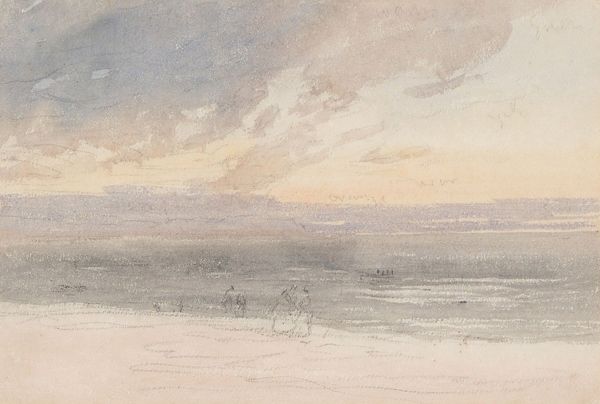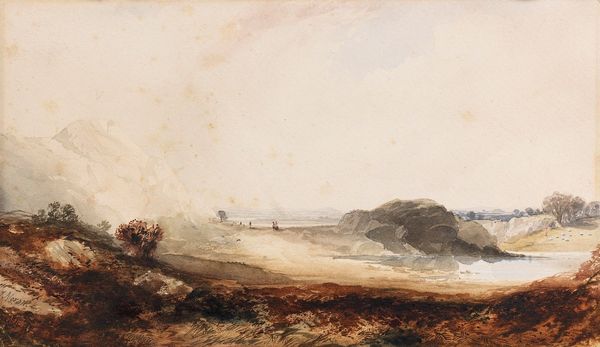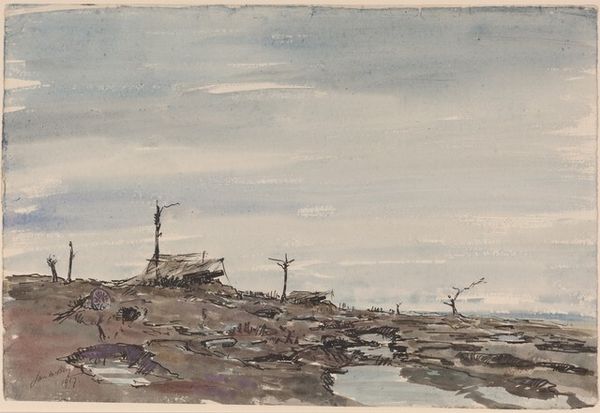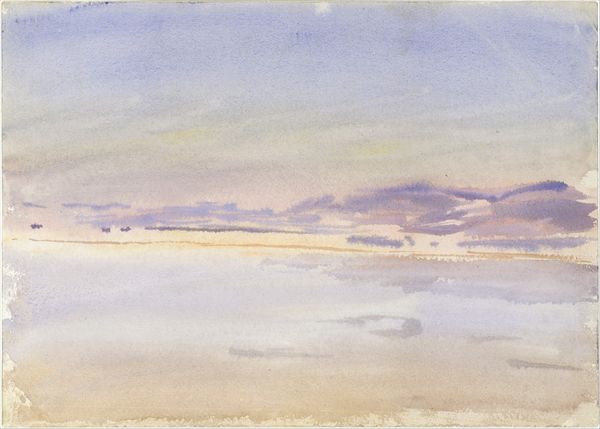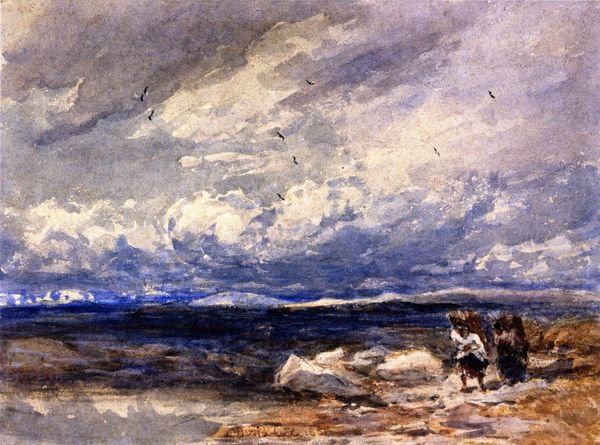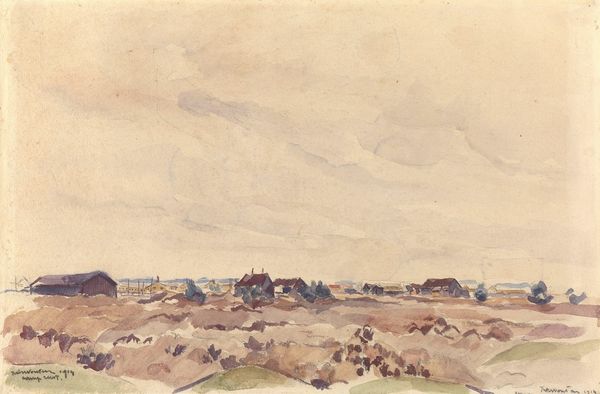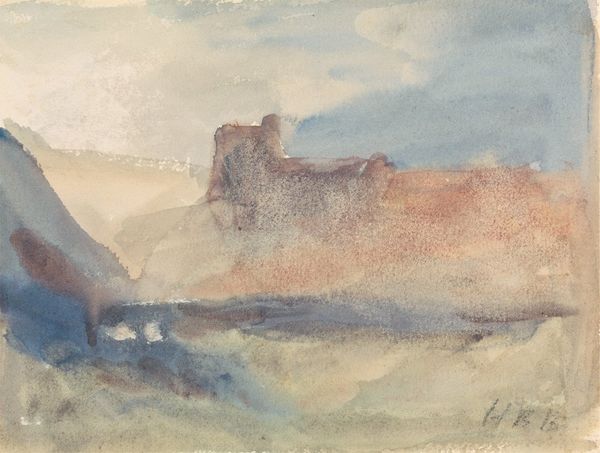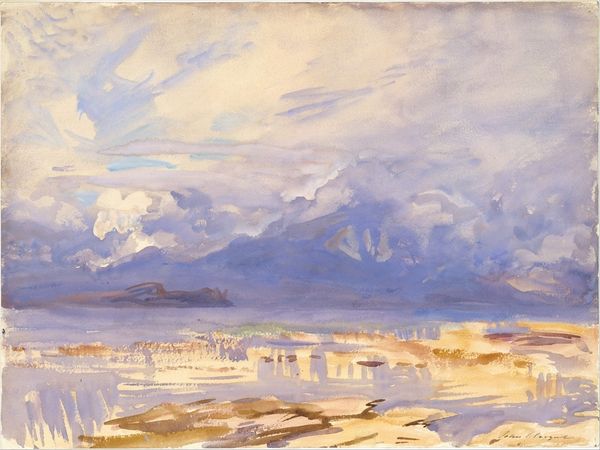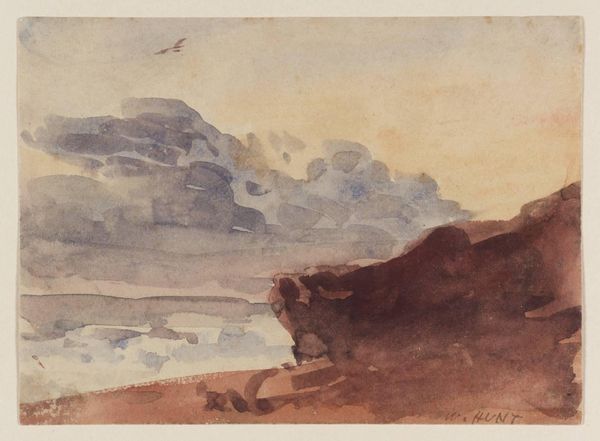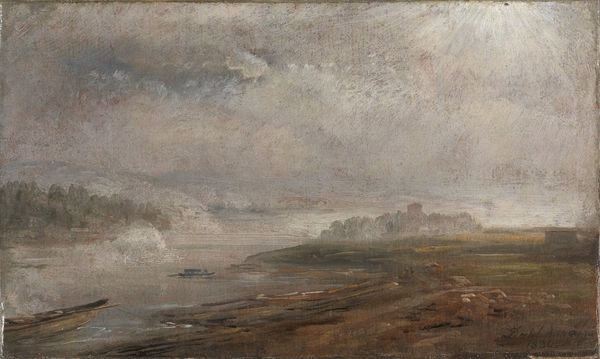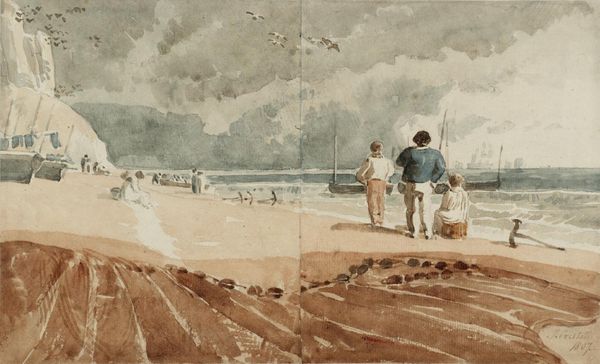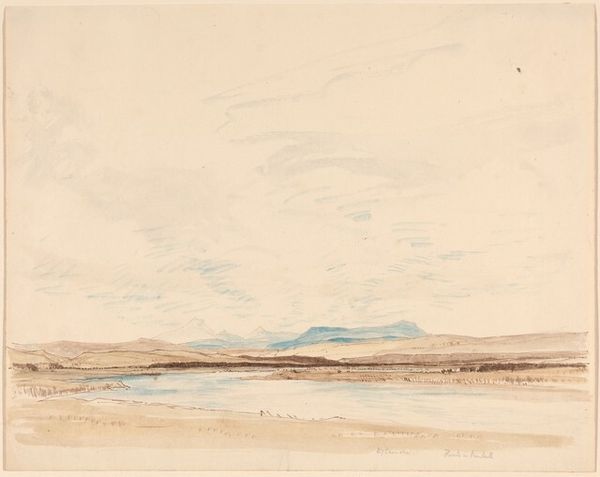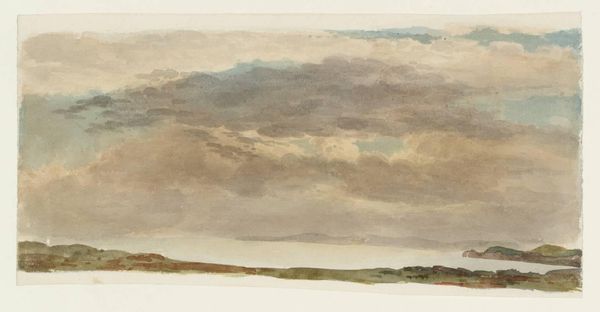
painting, plein-air, watercolor
#
painting
#
plein-air
#
landscape
#
figuration
#
watercolor
#
romanticism
#
watercolor
Copyright: Public Domain: Artvee
Editor: So, here we have "On Lancaster Sands, Low Tide," a watercolor painting made in the 1840s by David Cox. The scene is very muted, with soft browns and blues, and feels almost dreamlike. What do you see in this piece? Curator: Beyond its aesthetic appeal, it’s vital to consider how this work fits into the development of British landscape painting and the social function it served. Think about the context: the rise of industrialization pushing artists and audiences towards romanticized views of the natural world. What's striking is the emphasis on "plein-air," capturing the fleeting atmospheric conditions directly on site, influencing a market interested in owning a small piece of 'nature.' Does this outdoor focus strike you as new? Editor: Yes, I guess it does. Earlier landscapes that I remember seeing always felt grander, almost staged. This feels more immediate. Curator: Precisely. Cox's looser style and choice of watercolor made art more accessible to a growing middle class. Suddenly, artwork wasn't solely the domain of the elite. And those figures, how are they contributing to this change in artistic social function? Editor: I think they create a sense of scale, showing the vastness of nature compared to the people there to experience it. Curator: It's a dynamic, isn’t it? While appreciating the romantic aspects of this piece, think about its influence on representing ‘natural’ experiences in paintings; How do the depiction of people affect access and contribute to popular trends within British society? Editor: I hadn’t really considered how much social and political factors could affect something as simple as a watercolor landscape. Thanks for helping me think about the broader implications of this painting! Curator: Likewise, your initial impression about its ‘dreamlike’ quality hits upon how that feeling becomes valued in artistic circles that would spread into the modern era, showing artistic accessibility. Thank you!
Comments
No comments
Be the first to comment and join the conversation on the ultimate creative platform.
